Have you ever thought of learning to windsurf?
Are you a surfer?
You must admit, those intriguing colorful sails and people holding on to something are an interesting sight.
But how hard is it to learn compared to surfing, before you are one of those cutting through the waves, making loops or just returning to shore close to the spot where you launched?
Windsurfing requires a whole lot of knowledge, the first fact being that you do not want to learn in 15 to 25 knots of wind.
The second needed fact is that lessons are necessary if you want to master this sport. It is not quite like learning to ride a bicycle, where you have the option of training wheels.
- Learning to Windsurf
- Learning to Surf
- Windsurfing Newbies vs Surfing Newbies
- Getting Better: Windsurfing & Surfing
- Conclusion
- You Might Also Like…
Disclosure: this post contains affiliate links (clearly marked with ), which means we may earn a commission if you buy something through them, at no additional cost to you.
Learning to Windsurf
Learning how to windsurf requires determination and a whole lot of tenacity.
Falling off your board or getting launched into the blue, even at a calm lake, requires patience and a sense of humor, rather than physical strength.
Your first step may be just balancing on the board. For a surfer, this might be an easy task; for others, it is getting “sea legs” or becoming friendly with the feel of the bobbing water. This is before you have even pulled the sail out of the water.
When I was learning at the local lake, a family was picnicking on the shore, while their son who was learning to windsurf. He was trying to mount the board and pull up the sail in the shallow water.
No lesson, but he was determined to keep trying. Every time he fell off, however, the family would laugh hysterically. I always wondered whether he progressed further than that day!
The Right Technique Makes Learning Easier
Pulling the sail out of the water is not as much a matter of strength but of learning the best technique while working with wind and having a sail the right size for the conditions and your particular size.
When I first learned, I went to a lake in Mendocino County, California with a friend. He let me use his rig with a 5.5 square meter sail.
It was a great idea, until I realized I could not pull the sail up out of the water. As a very petite woman with little experience, that “giant sail” was too much for me.
I just kept drifting further out as I tried to uphaul the water-filled sail. It was a learning experience, to say the least.
After you have the sail out of the water, it is time to grab the boom and go. Getting back, after gibing, is another story.
If you like the idea of baby steps, the easy way would be to jump off the board into the water, point it in the right direction and get back on. You must eventually learn how to gibe and may be doing it soon after your first few rides.
While on the board, you might catch a gust… and you are totally hooked! That first puff of wind gives you a preview of what is to come.
After that, windsurfing becomes better and better, with abundant challenges along the way.
Is Windsurfing Difficult?
Learning is not that difficult if you:
- pick the right spot
- have the correct equipment
- take a lesson and, most importantly,
- take your time.
Patience allows you to not make mistakes, such as going out in the wrong conditions and getting into trouble before you know what you are doing.
You can become tired while learning; taking short breaks is a good idea. Lessons are even a better idea, even if you have surfed for years.
Learning about wind conditions and direction will make it easier. On the other hand, friends who teach you may become your enemies, after one frustrating and exhausting session of doing things the wrong way!
Equipment, equipment and more equipment
Once you have passed the beginner rental stage, the difference between surfing and windsurfing is equipment.
Rather than just grabbing your surfboard and possibly a wetsuit, windsurfing requires loading the car with:
- One or two boards
- More than one sail
- Mast
- Mast foot
- Boom
- Assorted nuts, bolts, screws and, possibly, fins
Add to this life vest or impact vest, wetsuit, booties, gloves, and hood (for cooler conditions) and you have a whole car full. Or do you need a truck, at this point?
The Right Equipment Makes Learning Easier
You may be able to buy much of your first equipment as a package for beginners, making it easier to have all the right equipment, when starting out.
Owning your equipment makes practice easier, as you do not have to worry about picking up and returning equipment.
After I first learned in Mexico, I began renting in the late 1980s, at the local California lake that had one or two giant boards for rent. I would call the park and reserve a sailboard.
When I arrived, two guys would come out and bring the heavy board to the water, as it took two people to carry it. Needless to say, it wasn’t until I bought my board and rig, right for my size and weight, that I truly learned and began to enjoy the sport.
As you advance in windsurfing, a shorter board may be called for. It is more controllable in windy conditions.
It may take you, as a beginner, six months of committed practice. However, if you live in a place with consistent conditions, such as Maui, the learning curve could be much shorter. What matters is how much time you spend on the water.
Learning to Surf
Like windsurfing, the playground constantly changes. Conditions and waves change, and part of learning is knowing about these conditions.
Even waves vary, and swells, tides, and wind can all influence your learning curve before mastery. Beginning surfing also is best with:
- Someone to teach you the basics
- Choosing the right spot
- Having the right board
- Knowing there is a learning curve
- Realizing that wipe-outs are part of the game
Is Surfing Difficult?
With a board with lots of volume, the experience of learning surfing becomes easier.
The most difficult part of surfing is paddling out from the beach to deeper water, where the waves are waiting for you to catch them. Endurance is a large part of the sport as shoulder muscles get a workout.
How long does it take to learn how to surf?
Know that this sport, as well as windsurfing, takes dedication and practice.
Learning to surf may require between two hours and one month of practice, depending on the beach and conditions.
As with most difficult sports, the more practice, the faster the learning curve. Owning your board, as with windsurfing, allows you to get out on the water more and become better.
Learning etiquette when it comes to surfing, is another thing.
What the Heck Is Surf Etiquette?
Stealing someone’s wave, or dropping in, is considered bad etiquette and is frowned on by surfers. Good waves should only be ridden by one surfer.
Knowing if it is your wave is something that is part of learning how to be a good surfer. Dropping in is considered as a violation of the etiquette of surfing.
Windsurfing Newbies vs Surfing Newbies
Beginner windsurfers have a challenge just as do beginning surfers. Both sports require
a knowledge and consideration of conditions, safety, and the beach site.
As far as which sport is more difficult, those who have tried both sports often have different ideas.
Knowing about equipment is one of the challenges of windsurfing. However, beginners can learn as they progress.
With complete rigs available for rental, learning about equipment is not a prerequisite to enjoying the sport. That usually happens as you advance to the next stage and want planing and faster runs.
You may be heading for more swells and waves; that could call for expanding your equipment and sail quiver.
Rules & Etiquette Or: The Right of Way vs. Dropping In
Both sports have rules, written and unwritten, that have been made to prevent injuries and avoid collisions.
The right-of-way affects intermediates more than beginners, but accidents can happen at any level. The basic rule of a beginner is to stay clear of other windsurfers, especially when you are first learning, even when just getting on the board.
In windsurfing, the right-of-way means that a downwind (leeward) windsurfer has right of way over the upwind (windward) windsurfer.
In other words, the person who has their right hand closer to the mast has the right-of-way.
However, instead of trying to figure this all out while someone is heading towards you, move away before you figure out who has the right of way, as the other person may not know this rule.
As mentioned above, surfing has its etiquette, which the surfer should know after they have felt the thrill of their first wave.
Surfers usually have to know more about tides and their effect on surf break. With a tide that is too high and rising, each successive wave will push higher.
However, if the tide is high and falling, the energy in the waves will decrease with each wave. An approaching low tide signals that the waves will be less powerful and flat.
This is almost as complex as knowing wind direction and speed in windsurfing. In fact, tides may also affect windsurfers who sail on the ocean or in bays, such as San Francisco Bay.
Getting Better: Windsurfing & Surfing
Once you are up and running, both sports present numerous challenges as you advance from beginner to seasoned athlete, mastering both wind and waves, bumps, and jumps.
Learning windsurfing is not difficult. You will not be doing jumps and getting air on the first day.
That is something that newbies need to realize, whether they are surfers or have never stood on a surfboard or sailboard. Many videos show the most extreme of the sport.
However, lakes and sailing in lower winds can offer wonderful days of flat sailing pleasure on sun-baked waters.
Conclusion
As to whether windsurfing is harder than surfing, both have a fairly long learning curve, although some surfers are riding waves after a few hours. And some windsurfers may be making short runs on their second day.
Both sports require patience and tenacity and a love of the water. After all, you will be falling in and getting wet, whichever sport you choose.
You Might Also Like…
-
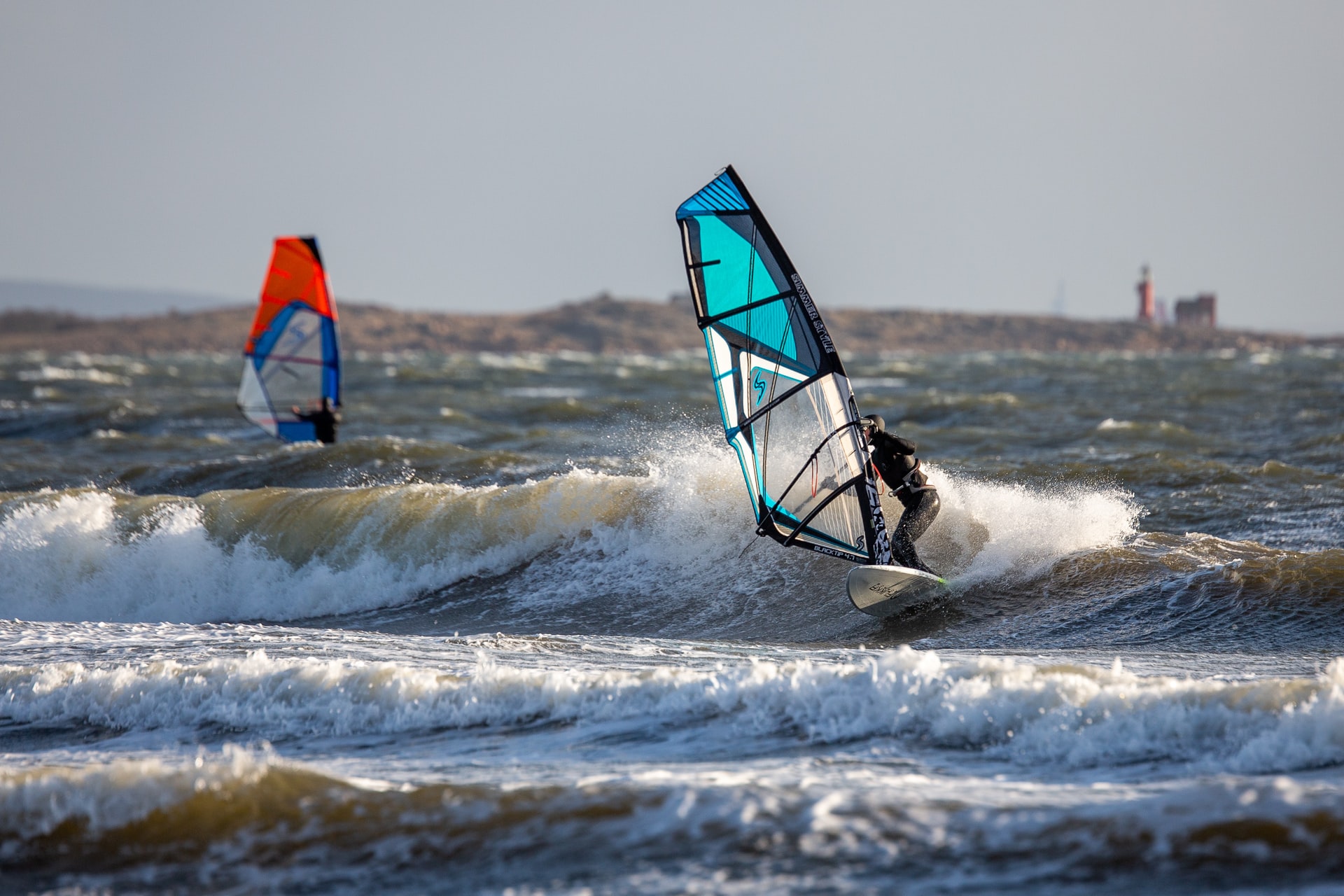
Surfing vs. Windsurfing: 8 Major Differences (& 4 Similarities)
-
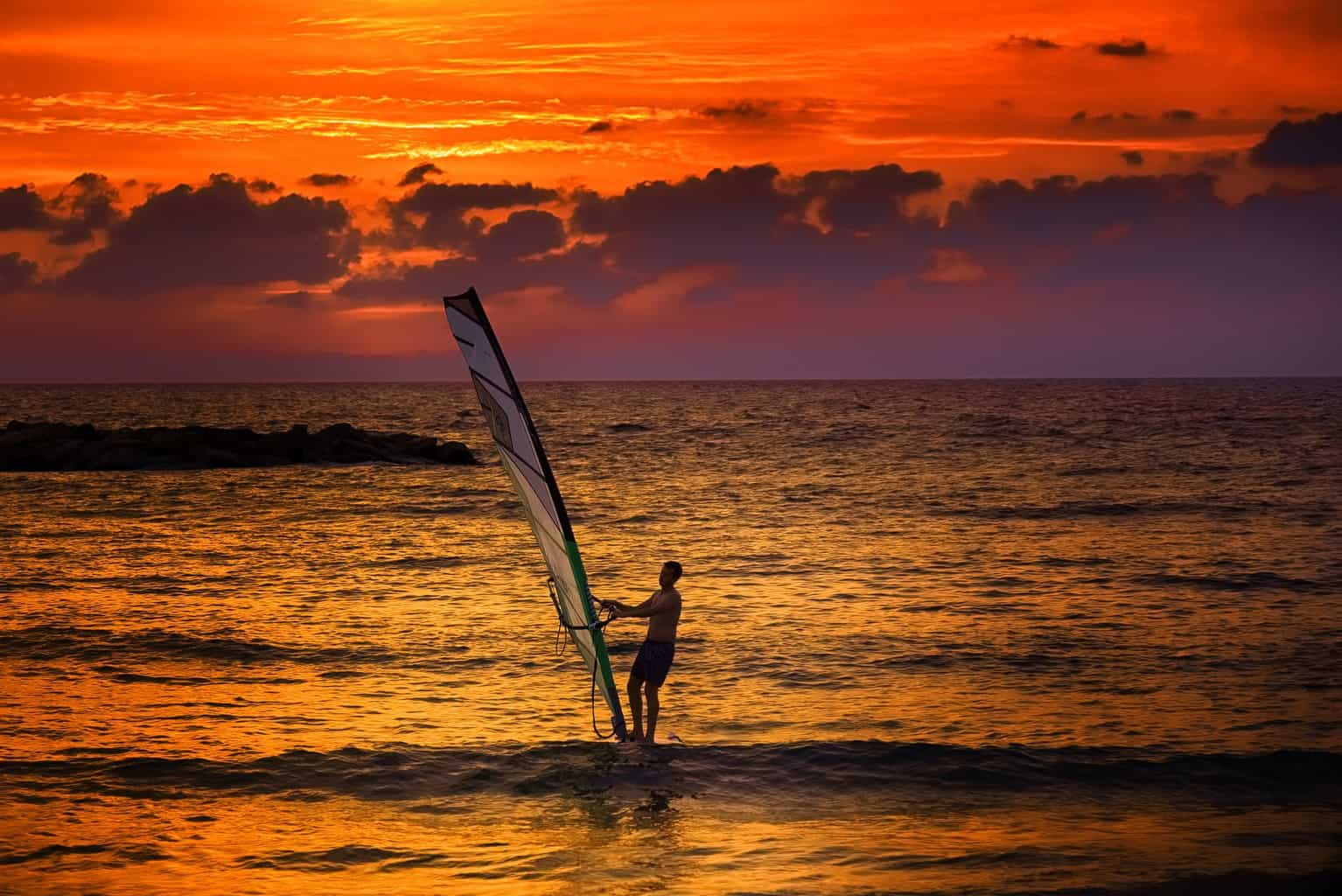
How Does Windsurfing Affect the Environment? (+8 Practical Tips)
-
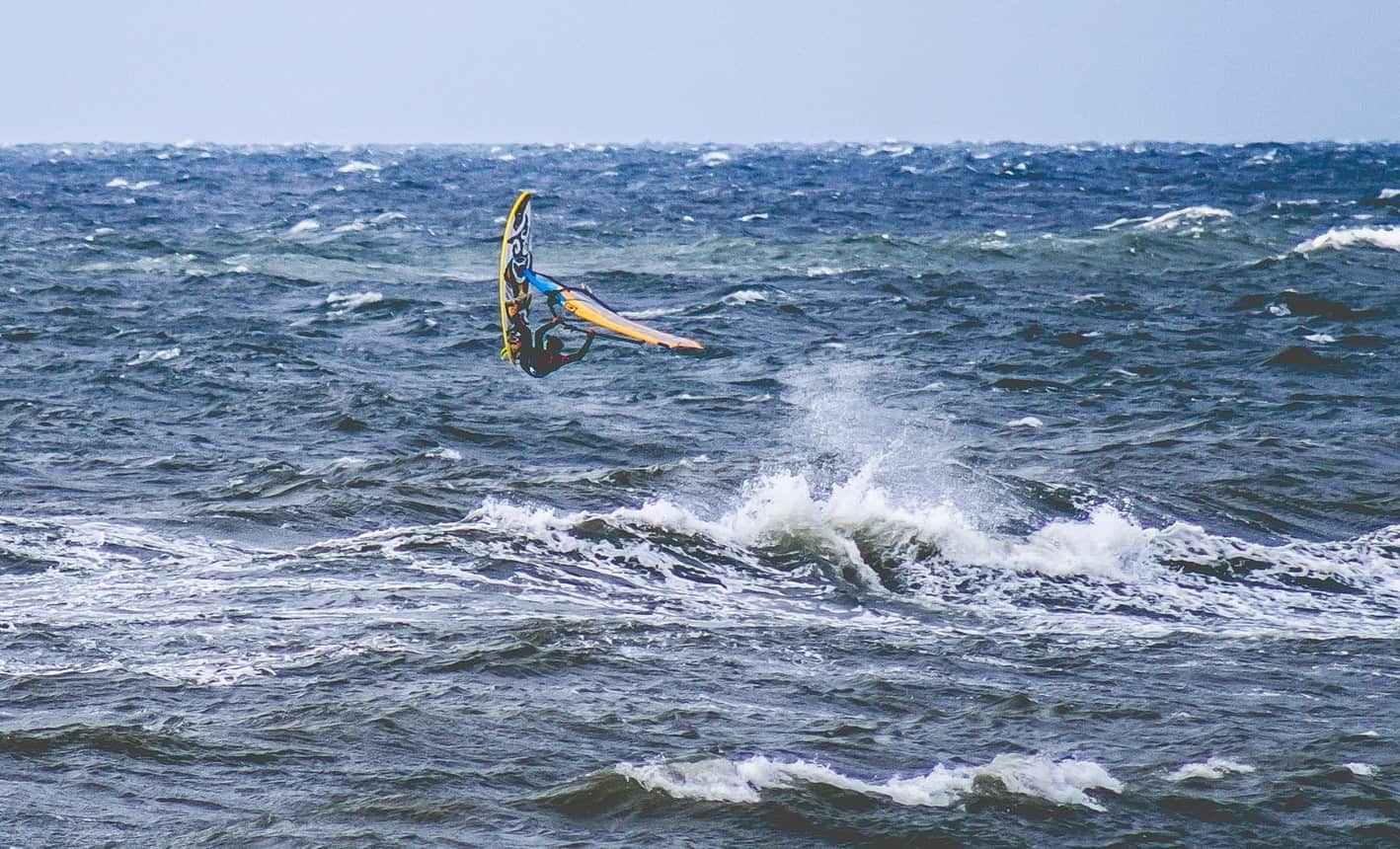
Is Windsurfing Dangerous? 14 Risks (& How to Avoid Them)
-
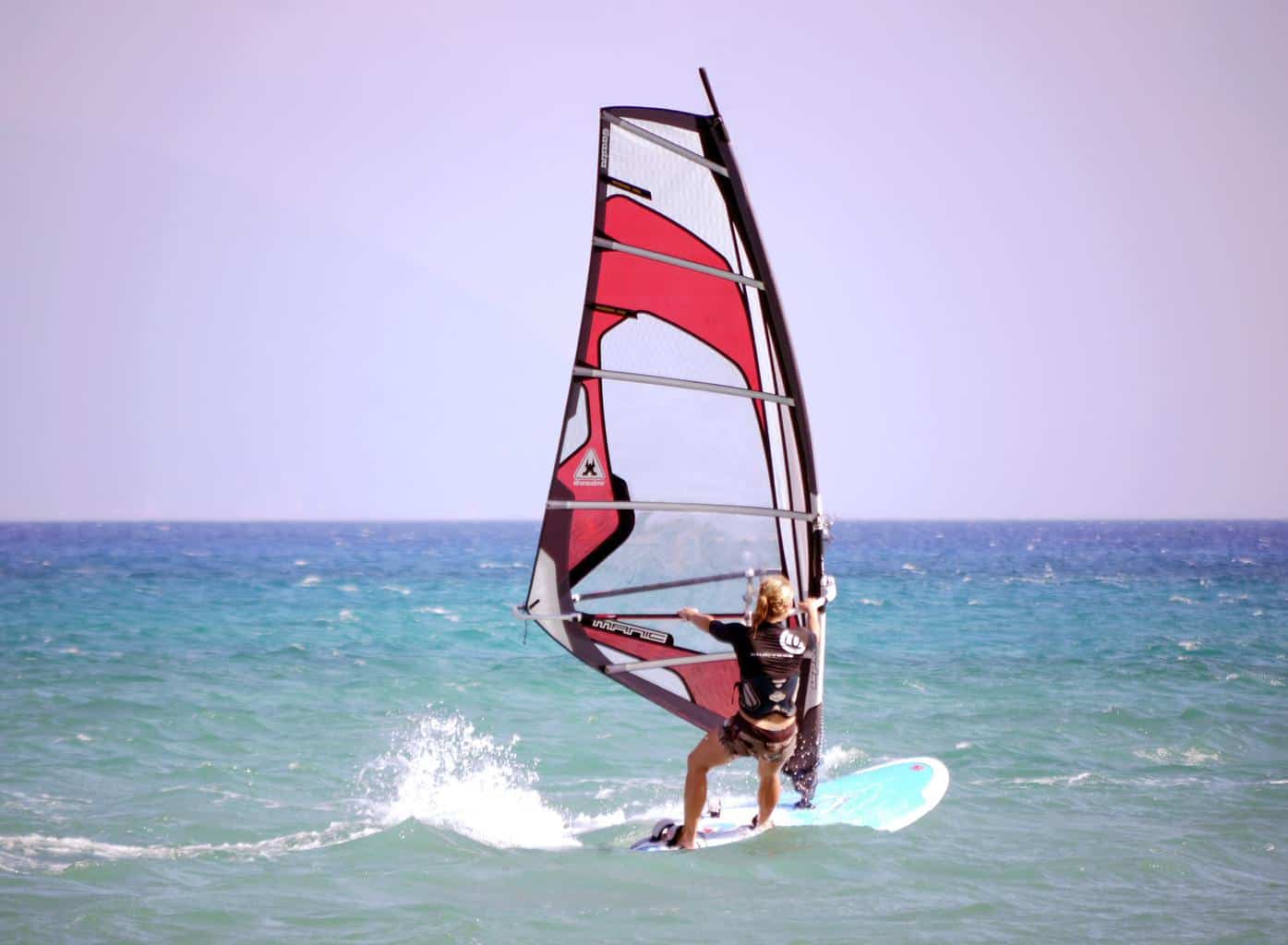
Windsurfing – 7 Common Beginner Questions (Answered)
-
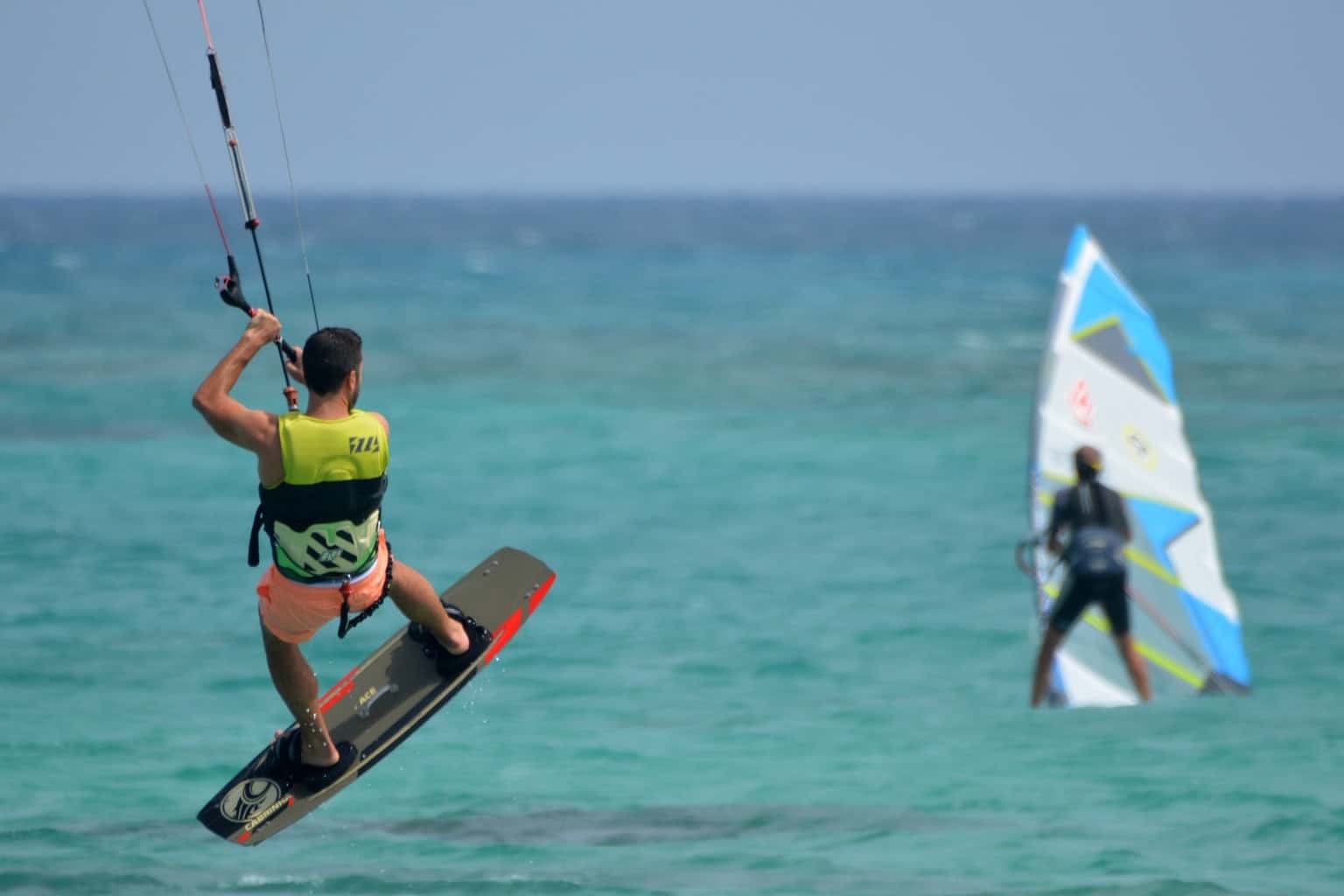
Is Windsurfing Faster Than Kitesurfing? (An Honest Look at the Facts)
-
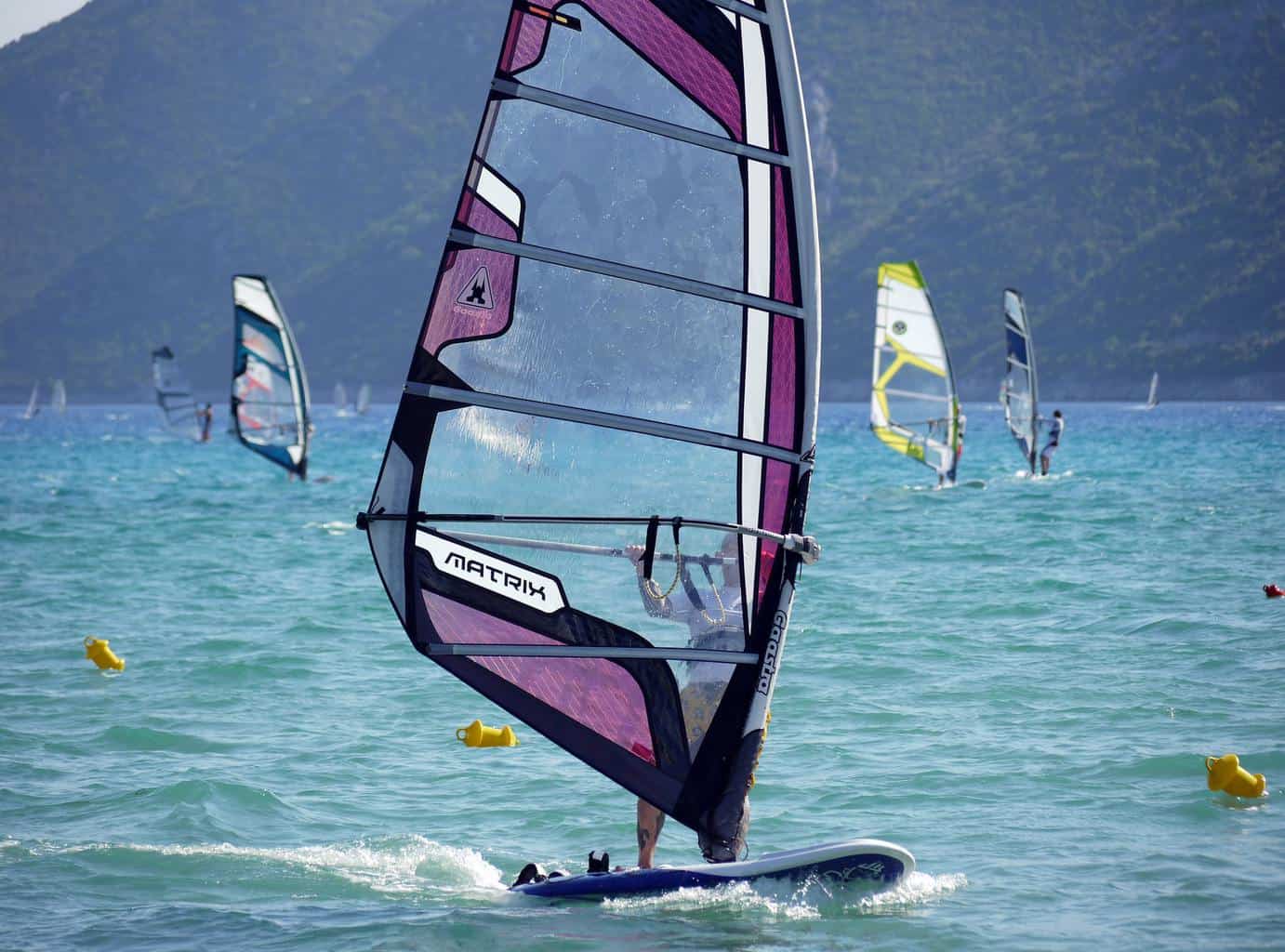
How to Choose the Right Windsurfing Sail Size (With Chart)
-
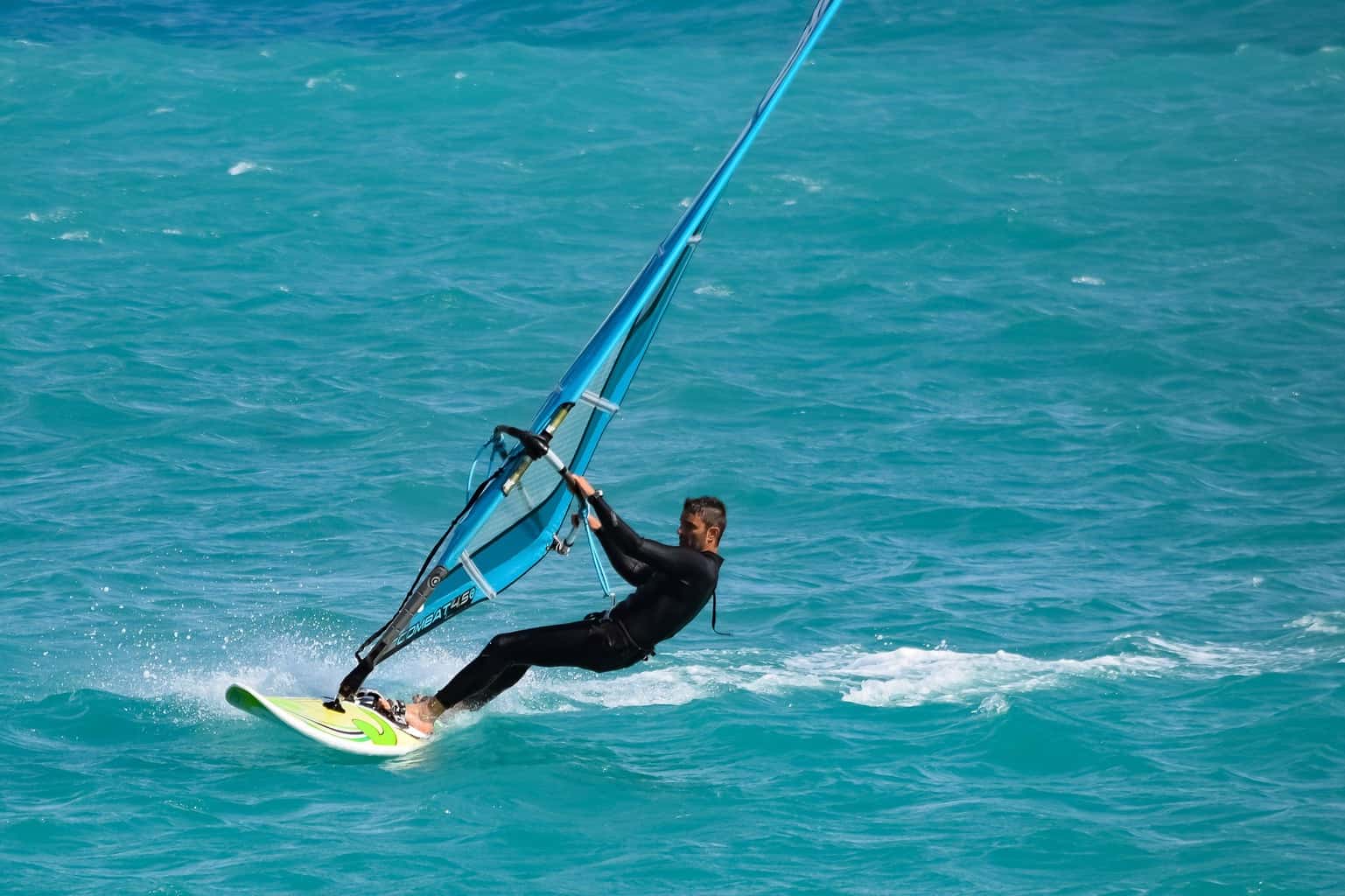
Windsurfing: How Much Downhaul Is Needed? (Essential Facts)
-
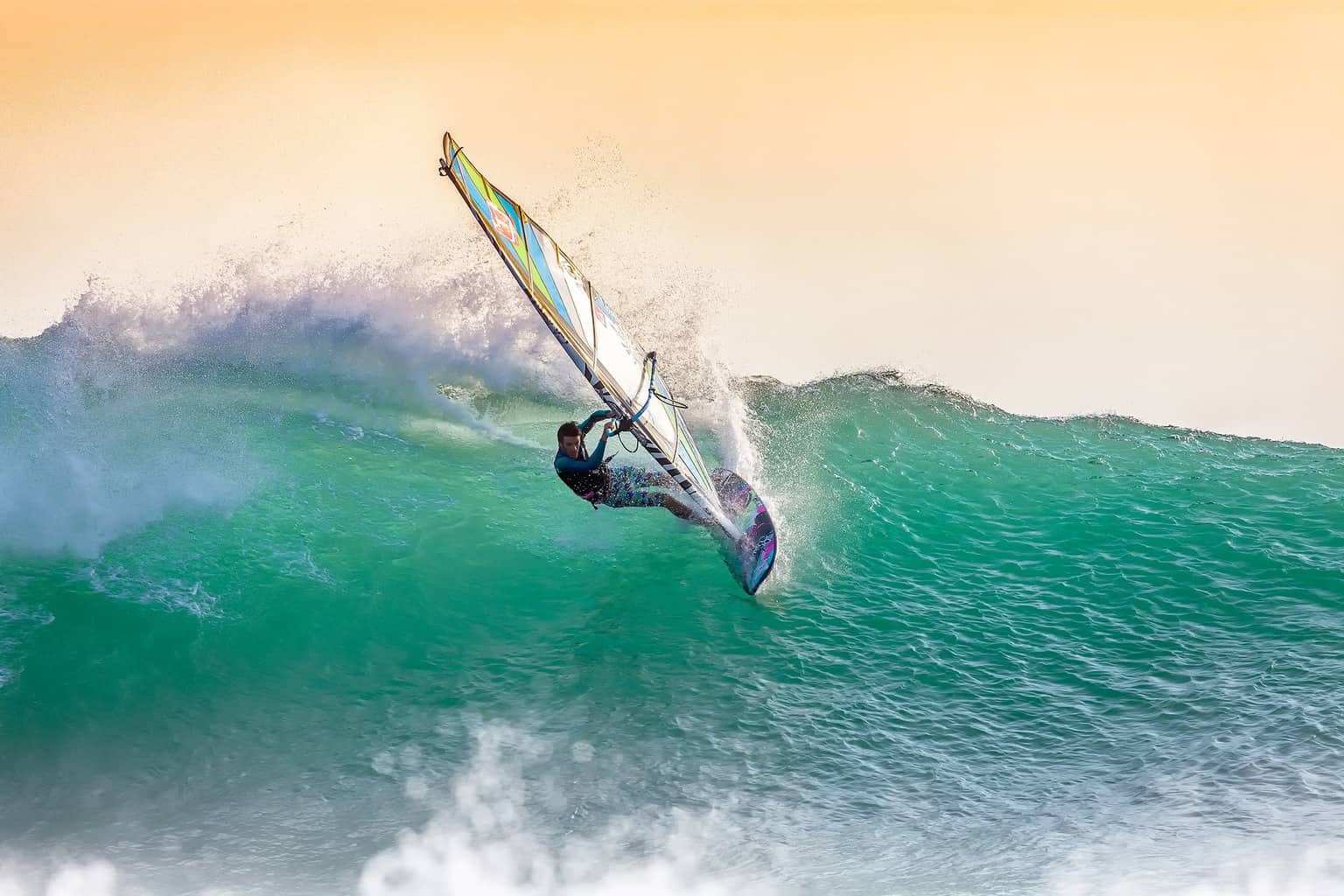
Is Windsurfing an Extreme Sport? (All You Need to Know)
-
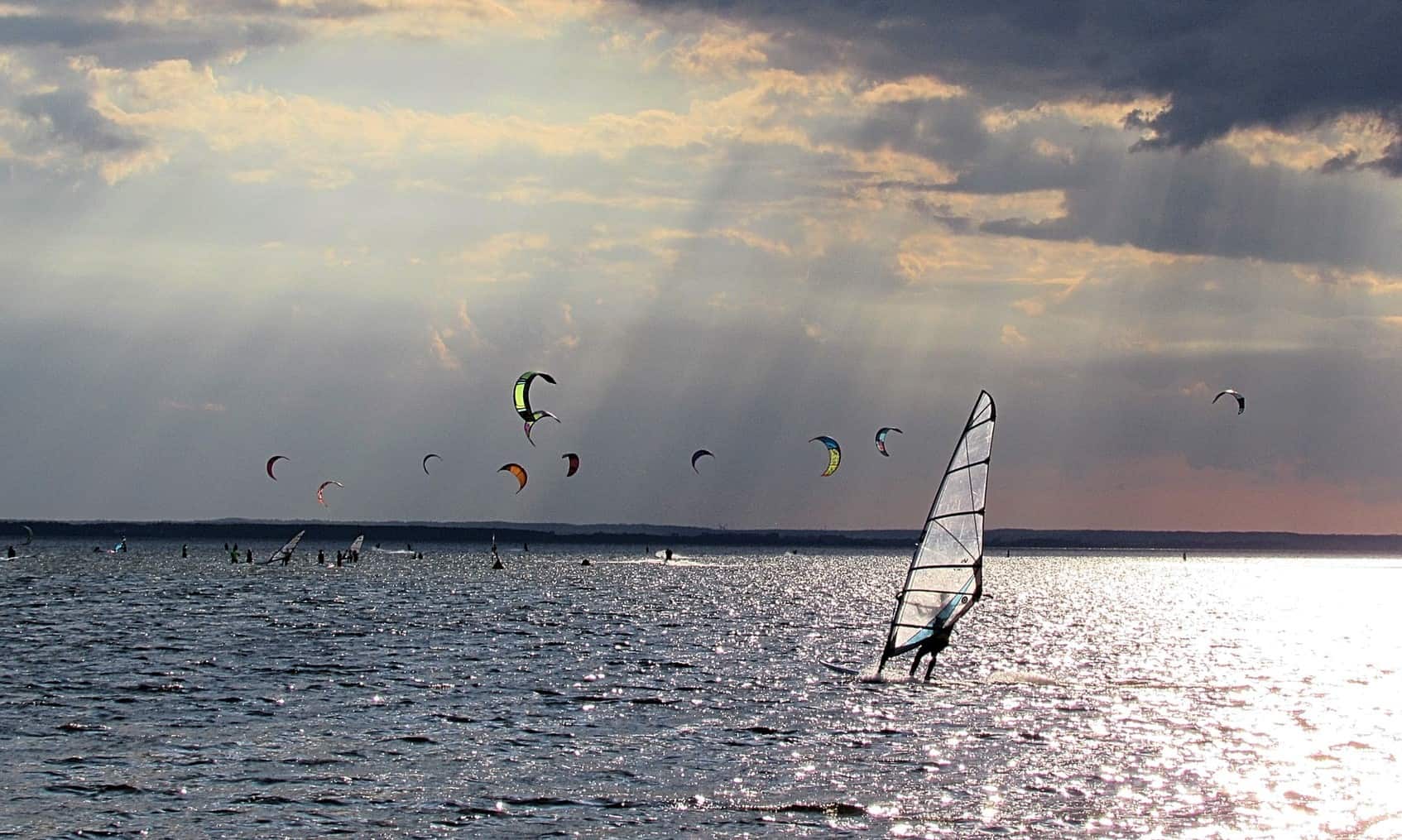
Is Windsurfing Easier Than Kitesurfing? (An Honest Comparison)
-
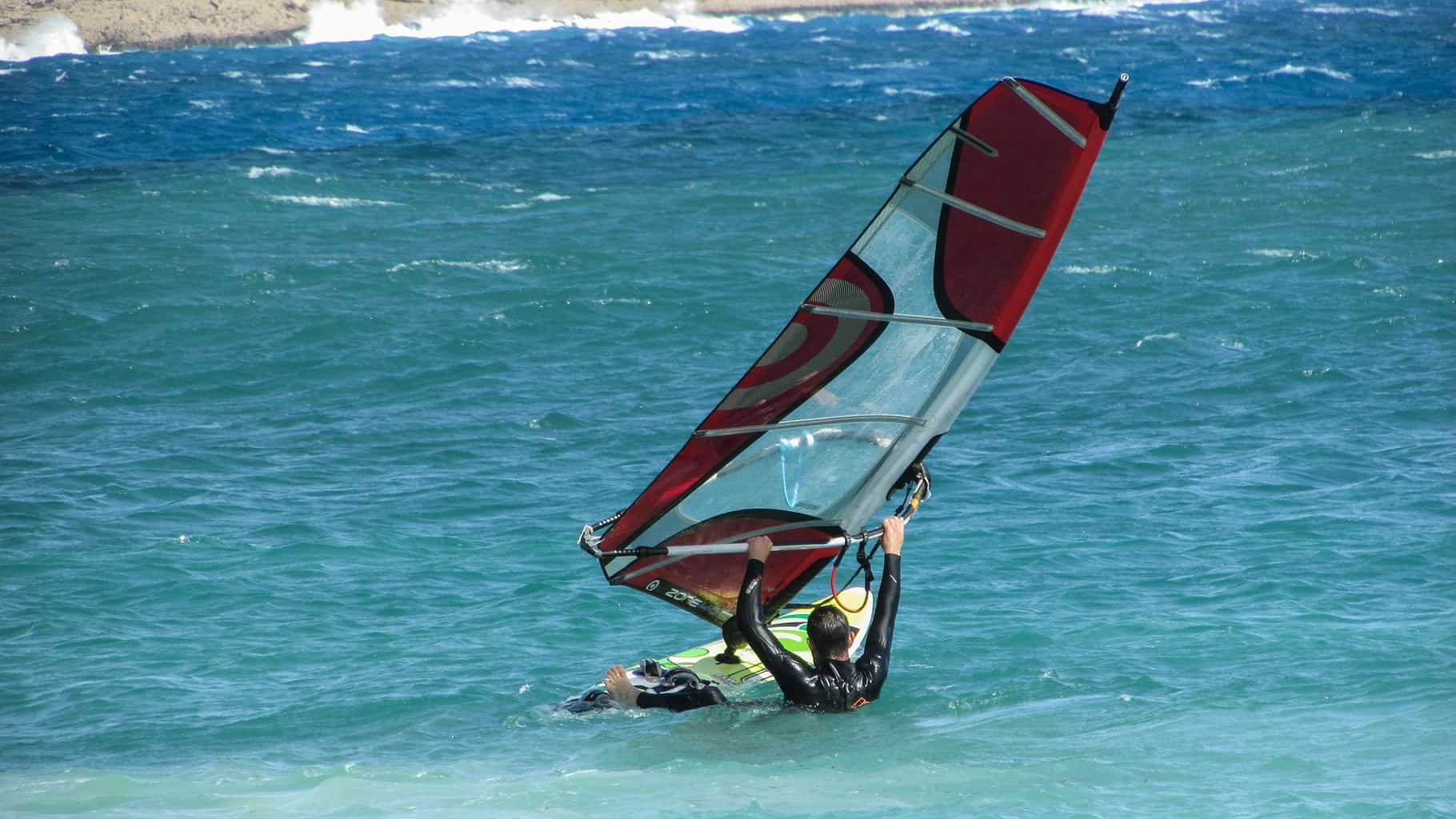
Is Windsurfing Harder Than Surfing? (Honest Comparison)
-
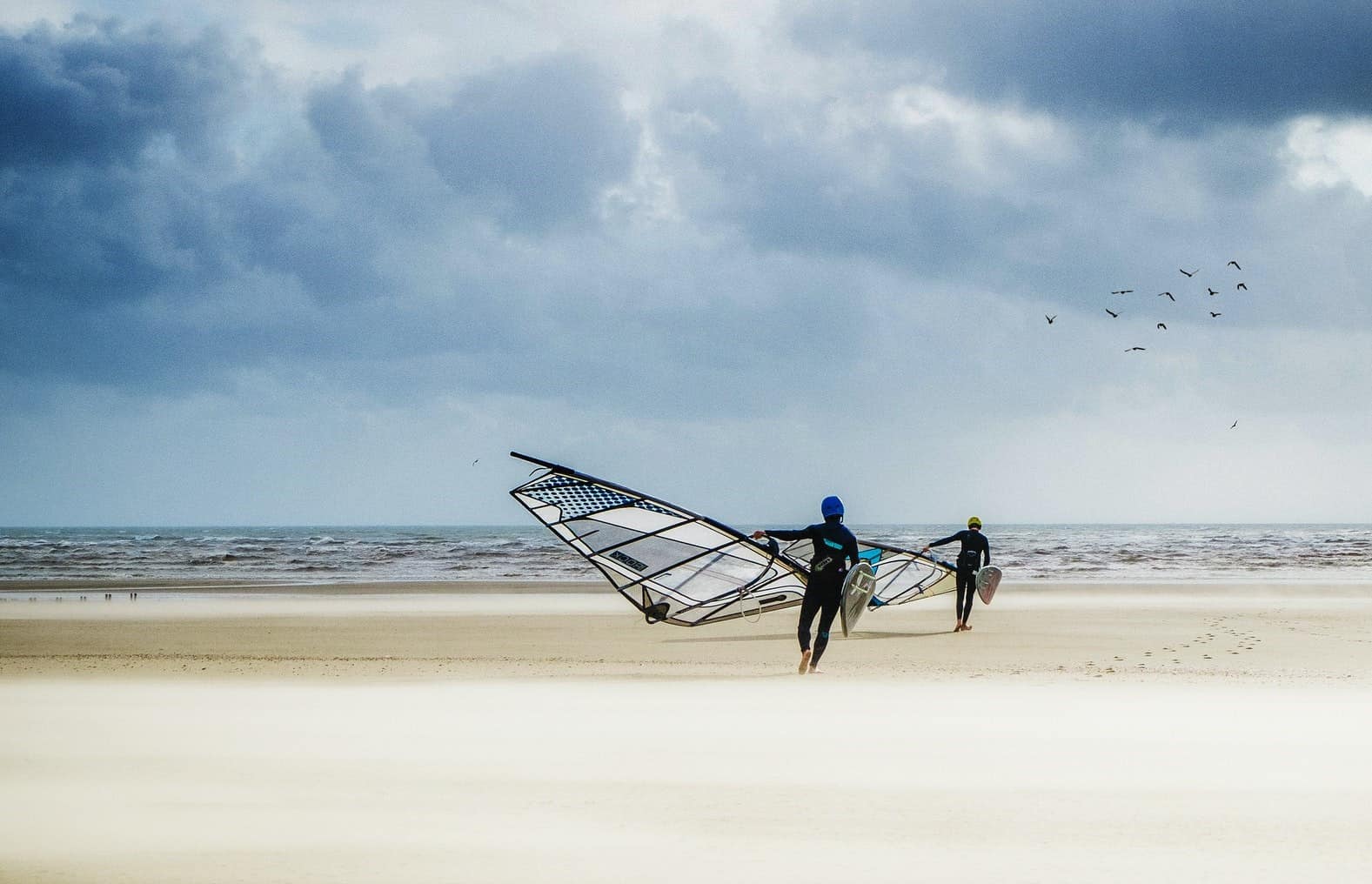
Is Windsurfing Still Popular? (An Insider’s Look at the Facts)










